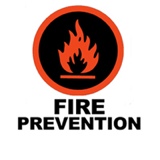Information
-
FIRE SAFTY REVIEW
-
Client / Site
-
Conducted on
-
Prepared by
-
Location
-
Personnel
R2 Fire Safety
R2 FIRE SAFETY
-
⚠️ CRITICAL RISK AREA ⚠️
R2.1 RISK ASSESSMENT & CONTROLS
-
Site wide fire and explosion hazards shall be risk assessed and appropriate control measures shall be implemented such as: <br>1. Keeping the minimum amount of flammable material on site<br>2. Ensuring housekeeping procedures are maintained <br>3. Providing good signage for exclusion zones Site wide fire and explosion hazards shall be risk assessed and appropriate control measures shall be implemented such as: <br> A. Keeping the minimum amount of flammable material on site <br> B. Ensuring housekeeping procedures are maintained <br> C. Providing good signage for exclusion zones where emergency equipment is stored <br> D. Providing appropriate and readily accessible fire suppression equipment - type, size, number and proximity of fire extinguishers. <br>4. In-plant fire suppression systems should be installed as per risk engineering guidelines. emergency equipment is stored<br>5. Providing appropriate and readily accessible fire suppression equipment - type, size, number and proximity of fire extinguishers. <br>6. In-plant fire suppression systems should be installed as per risk engineering guidelines.
-
-
-
-
Recommendations
R2.2 SOURCES OF IGNITION
-
Sources of ignition shall be identified and eliminated where possible. If elimination is not possible then all sources of ignition must be carefully controlled. Control measures should prevent contact of the ignition source with any flammable materials, liquids or vapours.
-
-
-
-
Recommendations
R2.3 FLAMMABLE LIQUIDS
-
Policies and procedures for the safe design and operation of flammable liquids storage, dispensing and handling facilities, must be comprehensive and strictly adhered to. All employees who handle flammable liquids will be trained in safe handling techniques to ensure a high level of safety and minimise the potential for a flammable vapour cloud to occur.
-
-
-
-
Recommendations
R2.4 SPRINKLER PROTECTION
-
Where required, sprinkler protection will be provided in accordance with local regulatory or code requirements or as otherwise agreed with Amcors Property insurer. Additional design features will be incorporated as deemed necessary for specific risks. The sprinkler system will be installed to operate automatically in the event of a fire.<br>
-
-
-
-
Recommendations
R2.5 CO2 SUPPRESSION
-
Carbon dioxide (CO2) gas suppression systems will be installed to protect key production plant such as gravure and flexographic printing presses that use low flash point flammable liquids
-
-
-
-
Recommendations
R2.6 FIRE DETECTION SYSTEMS
-
Fire detection systems should be installed as appropriate according to a thorough risk assessment
-
-
-
-
Recommendations
R2.7 HYDRANTS & EXTINGUISHERS
-
Fire hydrants, extinguishers and fire hose reels will be provided throughout the site in accordance with local regulatory requirements and the Amcor Fire Protection Standards.<br>
-
-
-
-
Recommendations
R2.8 SITE INSPECTIONS
-
Regular site inspections shall be undertaken including assessment of: <br>1. Housekeeping standards <br>2. Smoking controls <br>3. Handling and storage of flammable liquids and other dangerous goods <br>4. Fire equipment maintenance <br>5. Static electricity generation <br>6. Friction and heat generation<br>Site emergency teams shall include co-workers from all functional areas of the business, and be representative of site size and inherent fire risks. All emergency teams shall be properly trained and competency assessed.
-
-
-
-
Recommendations
R9 Hazardous Materials / Dangerous Goods
R9 HAZARDOUS MATERIALS / DANGEROUS GOODS
R9.1 IDENTIFICATION & DOCUMENTATION
-
Hazardous materials and dangerous goods on site must be identified, labelled and documented. A register shall be maintained to record the quantities, storage conditions and location of dangerous goods and hazardous materials. This should be reviewed and updated at least annually.
-
-
-
-
Recommendations
R9.2 MSDS
-
Material safety data sheets (MSDS) are required for all hazardous materials and dangerous goods. MSDS shall be registered, up to date and accessible by co-workers. MSDS folders or an electronic system should be available in production areas with all MSDS relevant to the work conducted in that area. Individual MSDS should not be more than 2 years old.
-
-
-
-
Recommendations
R9.3 RISK ASSESSMENT AND CONTROLS
-
Hazards associated with hazardous materials and dangerous goods will be identified, risk assessed documented and controls approved before receiving materials on site. The risk assessment must consider: <br>1. How the substance is to be used <br>2. Potential for exposure <br>3. Effects of mixing substances together <br>3. Recommendations for safe use of the material as contained in the MSDS <br>4. PPE and first aid requirements <br>4. Monitoring requirements <br>5. Other hazards (eg - flammability, reactivity).
-
-
-
-
Recommendations
R9.4 COMPLIANCE
-
Recommendations for safe use of the material as contained in the MSDS shall be complied with, such as PPE, spill kits, eye-wash stations, emergency showers and spill containment.
-
-
-
-
Recommendations
R9.5 CONTROL PROCEDURES
-
For each material or mixture of substances, procedures shall be established and maintained for controlling:<br>1. Volumes in use, storage and placarding <br>2. Co-worker and contractor exposure <br>3. Safe use in process, including handling, application spill control and waste management.
-
-
-
-
Recommendations
R9.6 EMERGENCY MEASURES
-
Appropriate control measures for use in an emergency situation shall be documented and included into the site emergency plans.
-
CONSEQUENCE
-
LIKELIHOOD
-
ACTION TIMELINE
-
Recommendations
R9.7 LABELLING & SIGNAGE
-
Labelling and signage of all chemicals, containers and transfer pipes shall comply with local legislation.
-
CONSEQUENCE
-
LIKELIHOOD
-
ACTION TIMELINE
-
Recommendations
R10 Emergency Response
R10 EMERGENCY
R10.1 EMERGENCY PROCEDURES AND PLANS
-
-
CONSEQUENCE
-
LIKELIHOOD
-
ACTION ITEM
-
Recomendation
R10.2 RISK IDENTIFICATION
-
Systems shall be in place to identify potential emergency situations and their impacts, including neighbouring activities. The types of emergency situations most likely to affect the site or co-workers shall be addressed in the procedure.
-
CONSEQUENCE
-
LIKELIHOOD
-
ACTION ITEM
-
Recomendation
R10.3 EMERGENCY RESPONSE PLAN
-
An emergency response plan, including evacuation procedures, shall be prepared for the most likely emergencies. These must include, but are not limited to fire, security threats, natural disasters, impacts from neighbouring business’s, chemical leaks or explosions. Emergency response plans shall be shared with local authorities that will respond to any emergency.
-
CONSEQUENCE
-
LIKELIHOOD
-
ACTION ITEM
-
Recomendation
R10.4 SITE EMERGENCY TEAMS
-
Site emergency teams shall be established appropriate to the size of the site and the hazards present. Nominated co-workers shall receive training in emergency response, and understand their role in emergency situations. Records of training and competency assessment shall be maintained.
-
CONSEQUENCE
-
LIKELIHOOD
-
ACTION ITEM
-
Recomendation
R10.5 SITE EVACUATIONS
-
Evacuations shall be practised at least every six months over all shifts, including liaison with and involvement of external response organisations. Areas for improvement arising from drills shall be documented and implemented.
-
CONSEQUENCE
-
LIKELIHOOD
-
ACTION ITEM
-
Recomendation
R10.6 PRACTICE AND REVIEW
-
A review of all emergency response procedures shall occur at least annually and records of practice events and reviews shall be maintained.
-
CONSEQUENCE
-
LIKELIHOOD
-
ACTION ITEM
-
Recomendation
R13 Electrical
R13 ELECTRICAL
R13.1 RISK IDENTIFICATION AND CONTROL
-
All electrical hazards shall be identified, documented, risk assessed and controlled.
-
CONSEQUENCE
-
LIKELIHOOD
-
ACTION TIMELINE
-
Recommendations
R13.2 CIRCUIT PROTECTIONS
-
Ground fault protection must be supplied for circuits in areas where water may be present. Over current protection must be provided and maintained for all electrical distribution equipment, such as switchboards.
-
CONSEQUENCE
-
LIKELIHOOD
-
ACTION TIMELINE
-
Recommendations
R13.3 AUTHORIZATIONS
-
Only authorised personnel may access transformers, high voltage switch gear (greater than 600 volts) and energised conductors. These areas shall be protected from all external hazards such as vehicles and fire.
-
CONSEQUENCE
-
LIKELIHOOD
-
ACTION TIMELINE
-
Recommendations
R13.4 SITE INSPECTIONS
-
Regular site inspections must be conducted and documented to confirm the following: o Continuity of grounding and other equipment used to control static electricity o Adequate clearance is maintained around electrical cabinets and switchgear o Electrical panels are marked with services, voltage, amps/watts, and service dates o Arc flash potential labelled on all electrical cabinets o PPE, as identified by risk assessment, is provided to co-workers o All electrical equipment in classified areas meets regulatory requirements.
-
CONSEQUENCE
-
LIKELIHOOD
-
ACTION TIMELINE
-
Recommendations
R13.5 QUALIFICATIONS
-
All persons installing and maintaining electrical circuits shall be qualified to carry out the work. A copy of qualifications and certificates shall be filed kept up to date.
-
CONSEQUENCE
-
LIKELIHOOD
-
ACTION TIMELINE
-
Recommendations
R13.6 ENERGIZED ELECTRICAL WORK
-
Whenever possible, electrical equipment shall be shutdown or de-energized and locked-out before work is performed. Safe procedures for de-energizing circuits and locking out equipment shall be determined before circuits or equipment is de-energized. A risk assessment shall be undertaken, and a specific permit issued, for all energized electrical work.
-
CONSEQUENCE
-
LIKELIHOOD
-
ACTION TIMELINE
-
Recommendations
R13.7 ELECTRICAL & PNEUMATIC DEVICES
-
A documented list of all electrical and pneumatic hand tools must be established and kept up to date: <br>1. Risk assessments must be carried out and documented prior to the use of electrical or pneumatic hand held tools or equipment specific to the task. The hierarchy of controls should be utilised to control all identified risks. <br>2. All hand held tools should be tested for integrity to regulatory standards at regular intervals.<br>3. Voltage regulations appropriate to the country of operation should be used and fuses no greater than that should be fitted to all electrical handheld appliances. <br>4. Training in the use of hand held appliances should be carried out and documented. <br>5. Appropriate PPE as identified in the risk assessment process must be provided. Evidence of understanding and correct use must be maintained and documented.
-
CONSEQUENCE
-
LIKELIHOOD
-
ACTION TIMELINE
-
Recommendations








